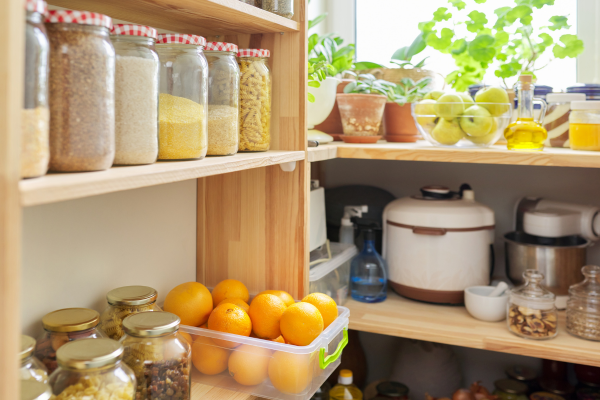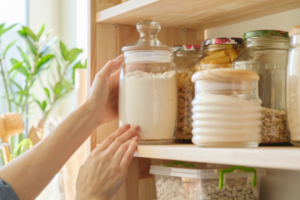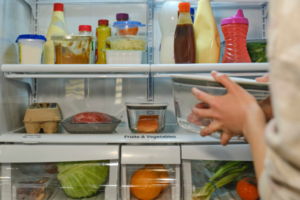Introduction:
Organizing your kitchen and managing food effectively can transform your cooking experience. A well-organized kitchen not only streamlines meal preparation but also minimizes waste and helps maintain a healthier lifestyle. From smart storage solutions to planning techniques, mastering food organization is an art that enhances efficiency and satisfaction in the culinary realm. This article explores various tips and tricks to help you optimize your kitchen space and food management for a seamless cooking journey.
Introduction to Kitchen Organization
1. Assess Your Kitchen Space
Before diving into organizing, assess your kitchen’s layout and available space. Identify areas that can be utilized for storage, such as cabinets, shelves, or drawers. Consider investing in space-saving organizers like drawer dividers, hanging racks, and stackable containers to maximize storage efficiency.
2. Categorize and Declutter
Sort through your pantry, refrigerator, and cabinets, categorizing items and discarding expired or unused products. Group similar items together for easy access and visibility. Utilize clear containers or labels to identify contents, simplifying the process of finding specific ingredients while preventing food spoilage.
Efficient Food Storage Solutions
3. Utilize Air-Tight Containers
Store dry goods like grains, cereals, and spices in air-tight containers to maintain freshness and prevent pests. Transparent containers help in quick identification of contents, while stackable designs save space and create a uniform look in your pantry.
4. Maximize Refrigerator Space
Arrange your refrigerator strategically by placing frequently used items at eye level for easy access. Use bins or organizers to segregate fruits, vegetables, dairy, and meats, optimizing space and reducing clutter. Ensure to label leftovers and use a “first in, first out” approach to minimize food wastage.
Effective Meal Planning and Inventory Management
5. Create a Weekly Meal Plan
Plan meals in advance to streamline grocery shopping and reduce spontaneous purchases. A weekly meal plan not only saves time but also ensures a balanced diet. Consider utilizing online meal planning apps or templates to organize your meals efficiently.
6. Keep a Food Inventory
Maintain a running inventory of your pantry and freezer contents. Regularly update the list by noting items as they are used or added. This practice helps prevent overbuying and allows you to utilize existing ingredients effectively when planning meals.
Streamlining Cooking Practices
7. Prep and Batch Cooking
Dedicate time for meal prep and batch cooking on weekends or when time allows. Chop vegetables, marinate meats, or cook grains in bulk and store them for later use. This practice not only saves time during busy weekdays but also encourages healthier eating habits.
8. Organize Cooking Utensils
Arrange cooking utensils near the stove for easy access while cooking. Use drawer dividers or utensil holders to keep spatulas, ladles, and other tools organized. Hang frequently used pots, pans, and cooking tools to free up cabinet space and facilitate quick access.
Enhancing Food Organization Strategies
9. Optimizing Cabinet and Pantry Space
Consider installing additional shelves or risers inside cabinets to maximize vertical space. Utilize door-mounted racks or hooks to store spices, small jars, or kitchen towels, freeing up valuable shelf space for larger items. Group similar items together and designate specific zones for baking supplies, canned goods, or snacks for easy access.
10. Labeling and Rotation
Labeling containers and shelves can significantly aid in maintaining order within your kitchen. Use a labeling machine or simple adhesive labels to mark containers and shelves. Additionally, practice the FIFO (First In, First Out) method when stocking your pantry or refrigerator. Place newer items behind older ones to ensure older items are used first, reducing the risk of food spoilage.
Strategic Kitchen Layout
11. Efficient Kitchen Workflow
Organize your kitchen based on workflow to increase efficiency. Store cooking utensils near the stove, cutting boards close to food preparation areas, and baking supplies near the oven. This layout minimizes movement during meal preparation and streamlines the cooking process.
12. Utilizing Vertical Space
Explore vertical storage solutions by installing hooks or racks on walls or the inside of cabinet doors. Hang mugs, ladles, or even pots and pans to free up cabinet or drawer space. Wall-mounted shelves or magnetic strips for knives and spice jars are excellent space-saving options.
Sustainable Food Management
13. Reduce Food Waste
Minimize food waste by practicing proper food storage techniques. Use resealable bags or containers to store leftover ingredients or meals, making them easily accessible for future use. Repurpose vegetable scraps for homemade broths or composting, contributing to a more sustainable kitchen environment.
14. Smart Shopping Habits
Plan your grocery trips according to your meal plan and inventory. Create a shopping list based on planned meals to avoid impulse buys. Consider buying in bulk for frequently used items while ensuring they can be stored properly to maintain freshness.
Advanced Meal Prepping Techniques
15. Freezing and Portioning
Utilize freezer-safe containers or bags to portion and freeze meals or ingredients. Label containers with contents and dates to ensure easy identification. Pre-portioning ingredients for specific recipes can save time during busy days while ensuring that food is stored properly.
16. Utilize Vacuum Sealers
Vacuum sealers are excellent tools for extending the shelf life of perishable items. They remove air from containers or bags, reducing the risk of freezer burn and maintaining food quality for an extended period.
Conclusion
Mastering food organization involves a blend of strategic planning, efficient utilization of space, and conscious consumption habits. By implementing these advanced tips and tricks, you can further elevate your kitchen organization skills, reduce waste, and enhance the overall cooking experience.


